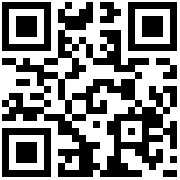Add: No.34 Yunguang Road, Oubei, Yongjia, Wenzhou, Zhejiang, China
Mob: +8618357723772
E-mail: sales@koeochina.com
The disturbance sources outside the electromagnetic flowmeter system can be divided into:
(1) Natural disturbance. Natural disturbances include lightning and changes in the electrical field of the atmosphere. Lightning can generate high-frequency surge voltage with high amplitude on the transmission line, causing disturbance to the system.
(2) Electricity disturbance. As more and more electronic devices are connected to the power backbone, there will be some potential disturbances in the system. These disturbances include power line disturbances, electrical fast transients, power surges, voltage changes, lightning transients, and power line harmonics.
(3) Power frequency disturbance. Power frequency interference occurs in both the power supply equipment and the output line. If a section of the signal transmission line is parallel to the power supply line, this low frequency interference will be coupled to the signal line and become interference.
(4) Radio frequency interference. Communication equipment, radio broadcasting, television, radar, etc. will emit strong radio waves through the antenna.
(5) Electrostatic discharge. Using modern chip technology, components have become very dense on small geometric scales. These high-speed, multi-million transistors are highly sensitive and are easily damaged by external electrostatic discharge.
(6) Car clutter. Cars generate clutter in the VHF to UHF frequency bands during operation.
(7) Discharge disturbance. Partial discharge can be divided into positive corona discharge, negative corona discharge and spark discharge.
(8) Glow discharge. Glow discharge is gas discharge.
(9) Arc discharge. Arc discharge is metal mist discharge, and the most typical arc discharge is metal arc welding.
Add: No.34 Yunguang Road, Oubei, Yongjia, Wenzhou, Zhejiang, China
Mob: +8618357723772
E-mail: sales@koeochina.com
